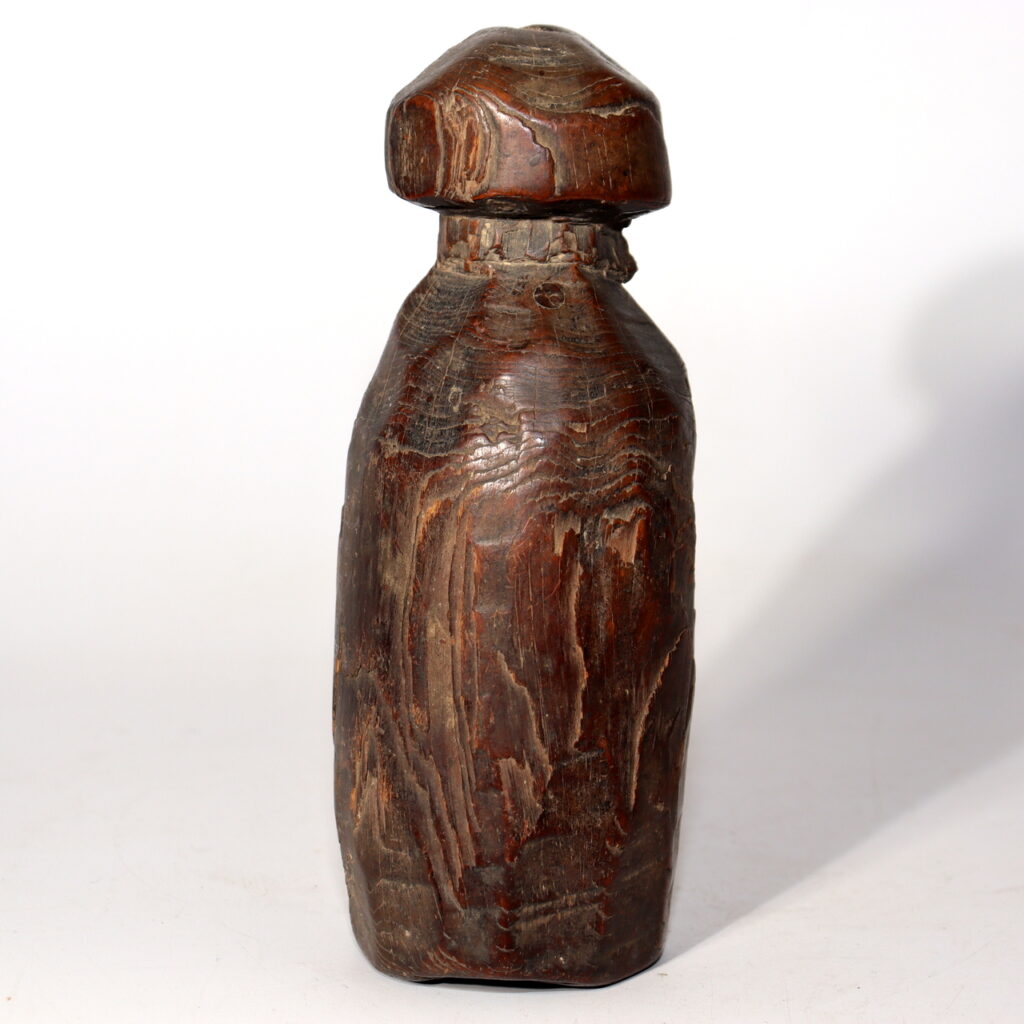
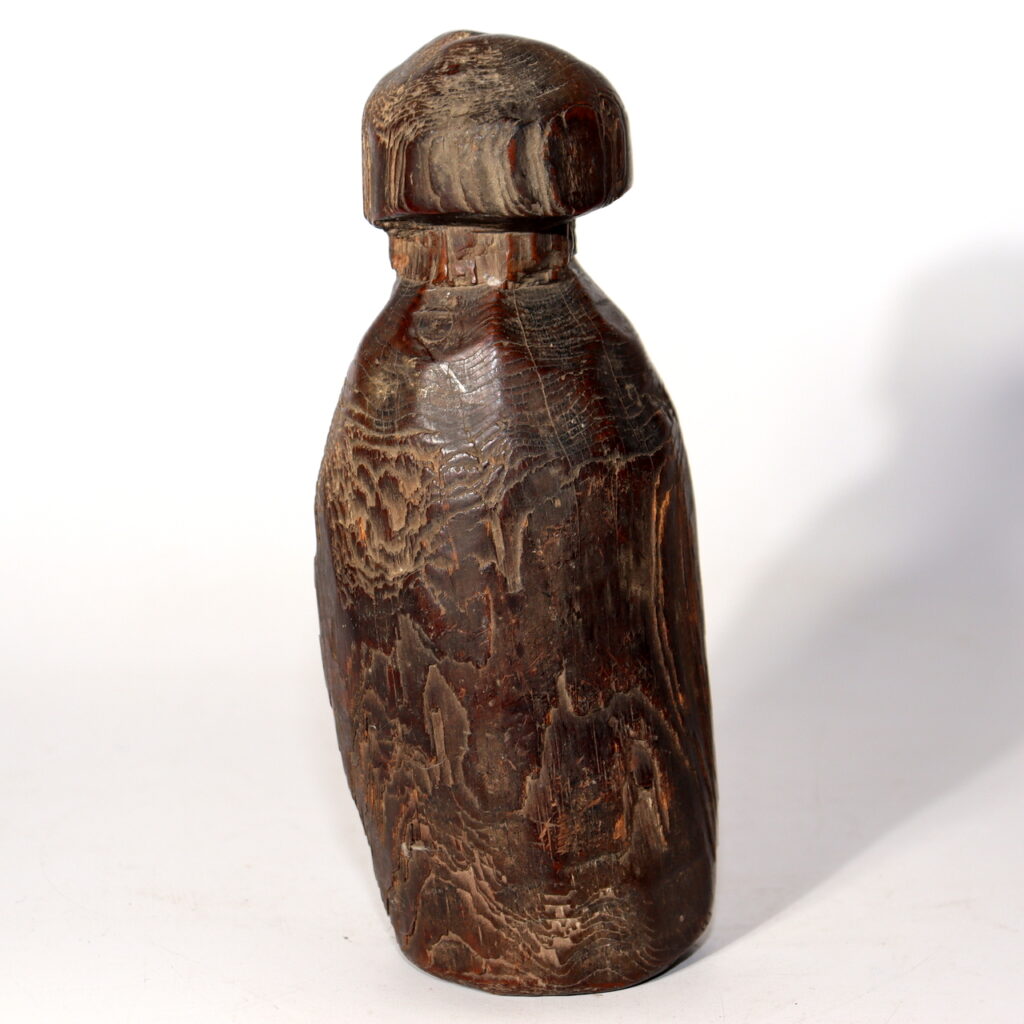
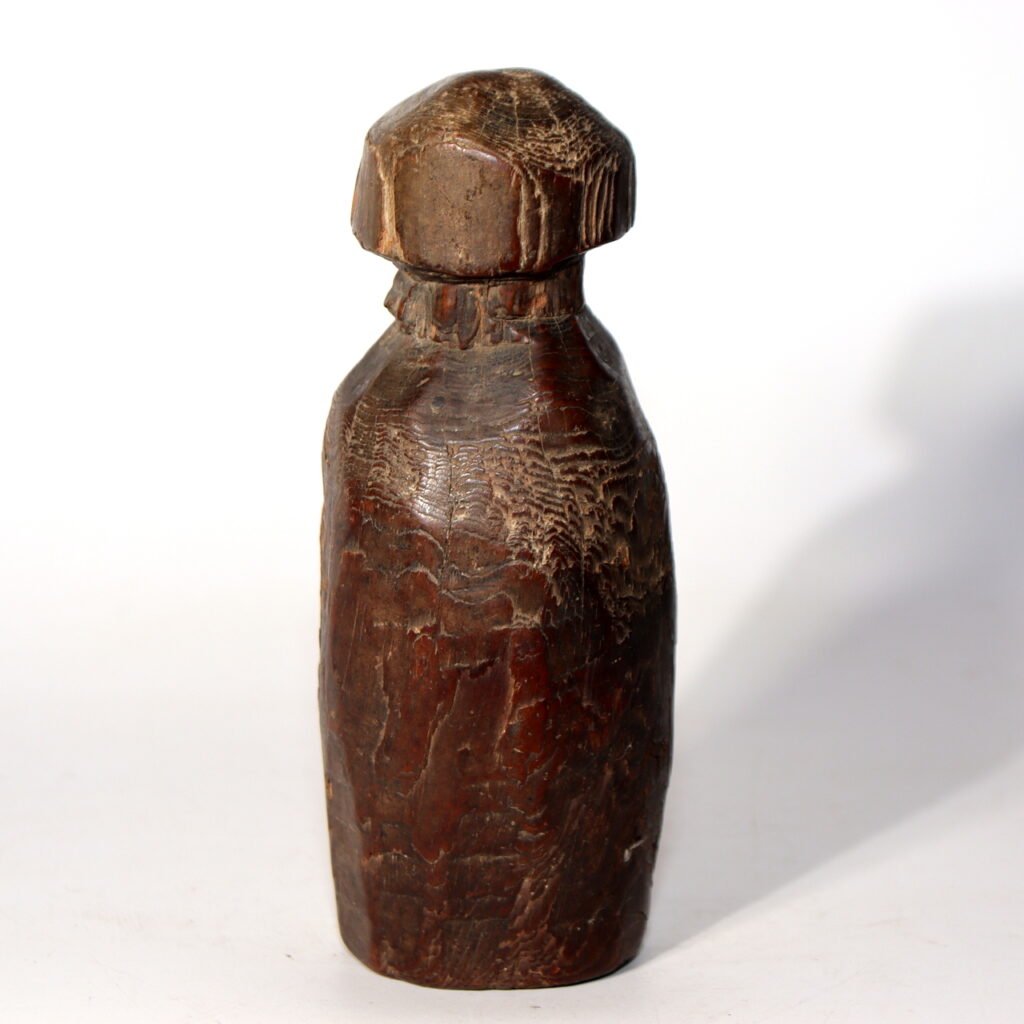
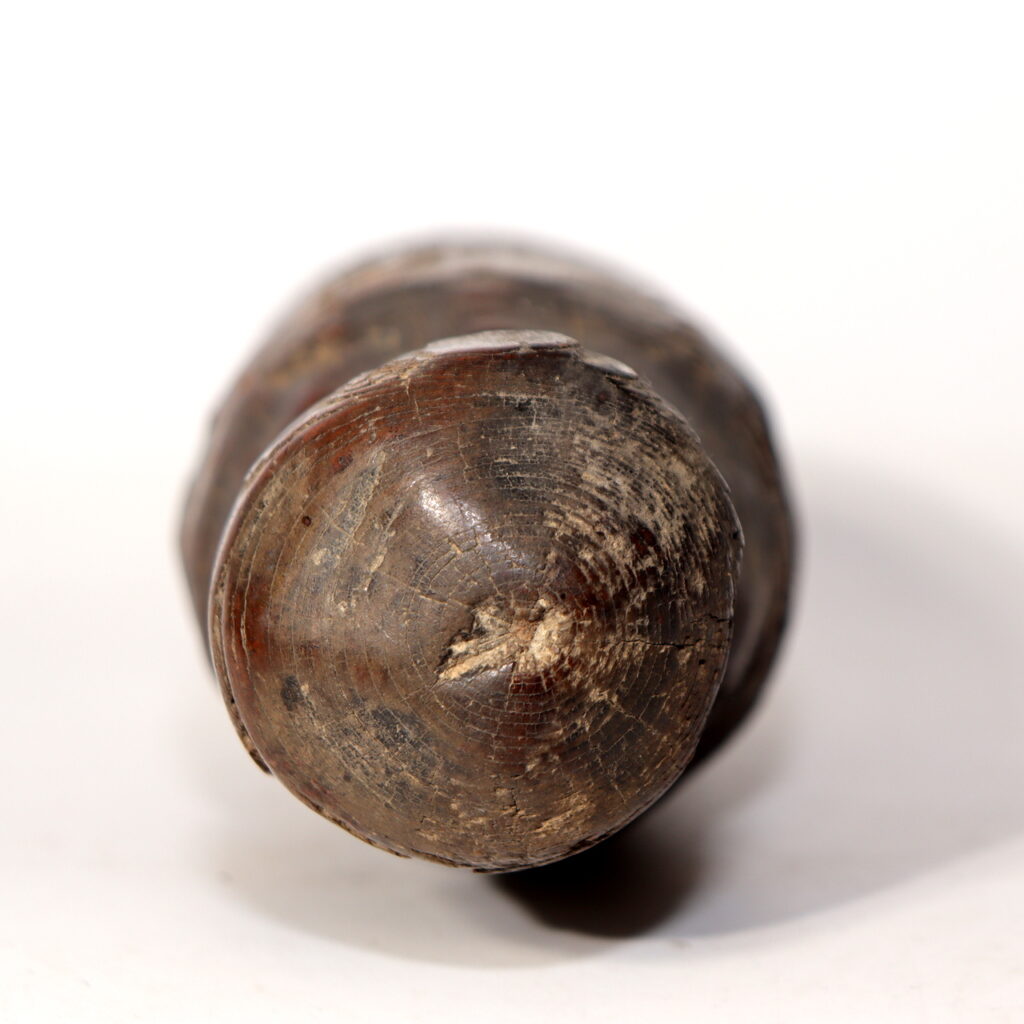
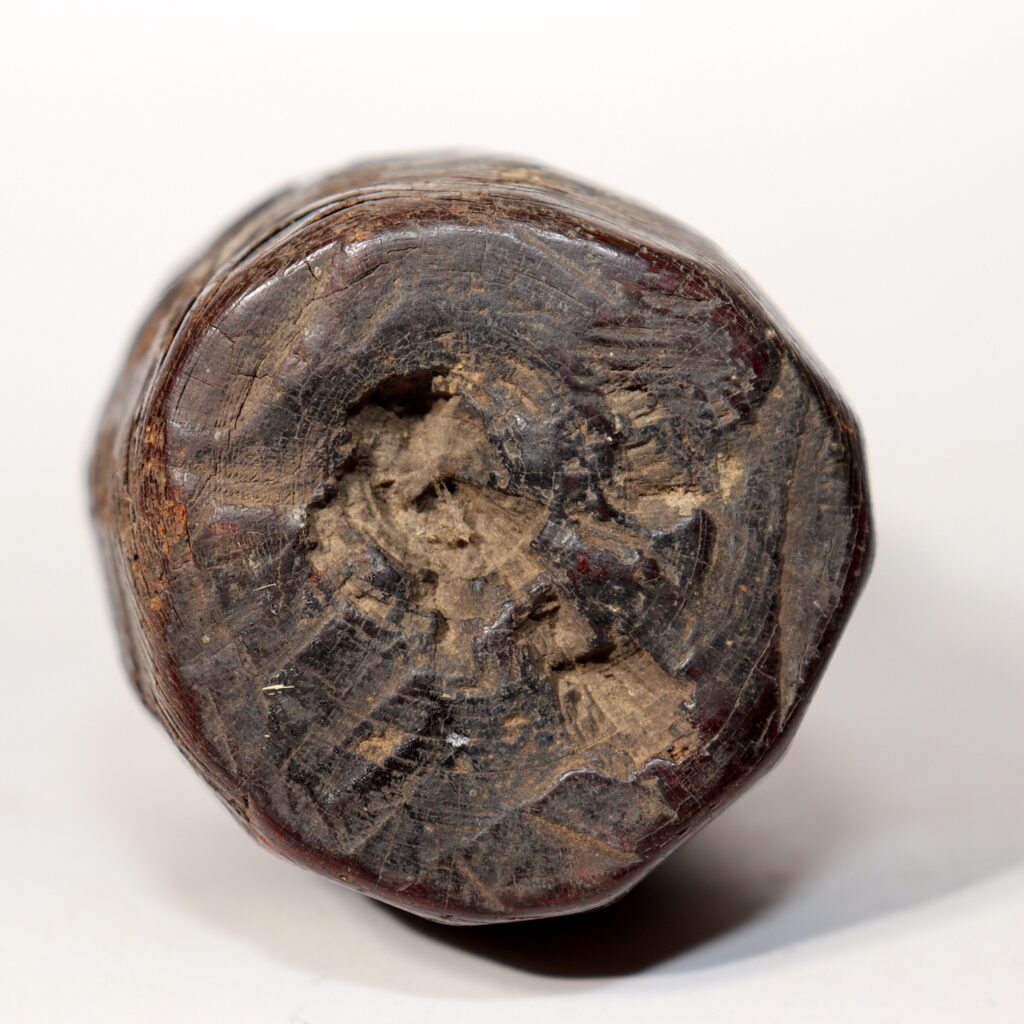
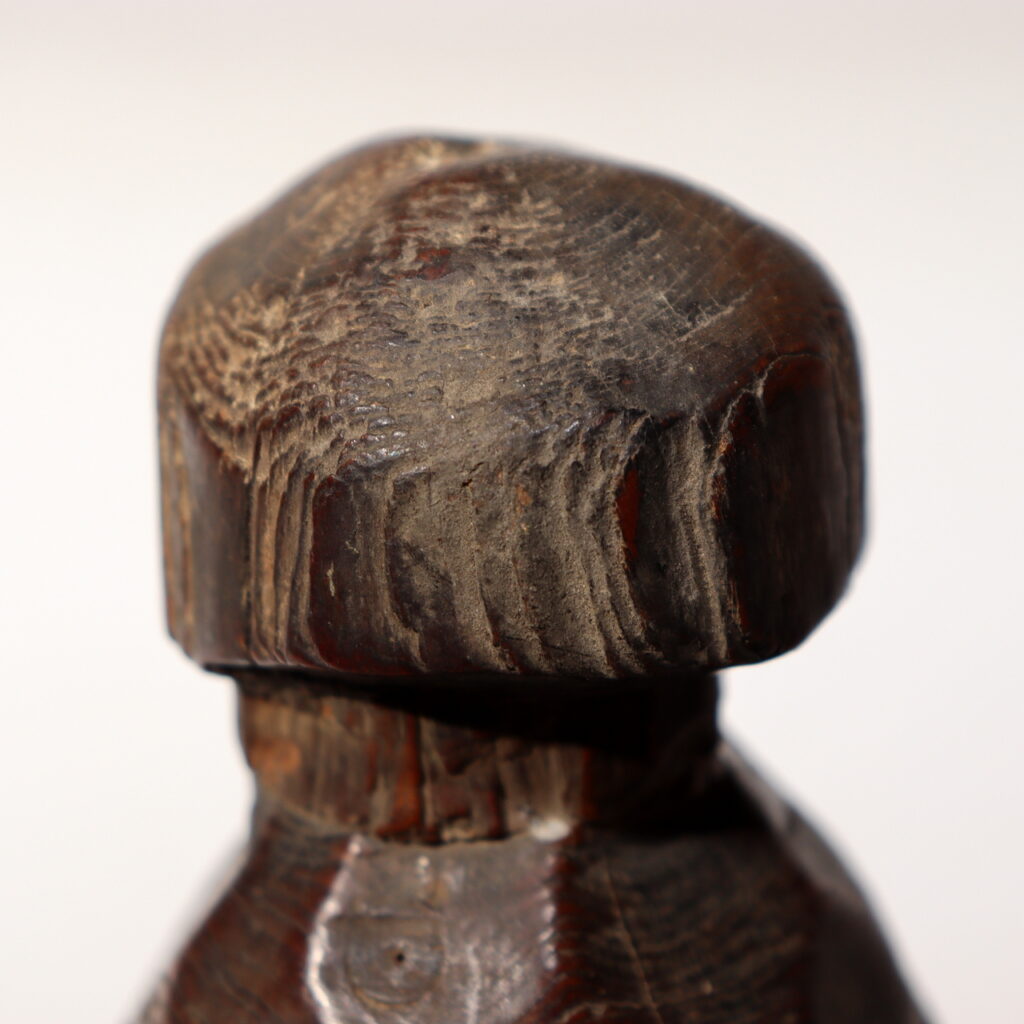
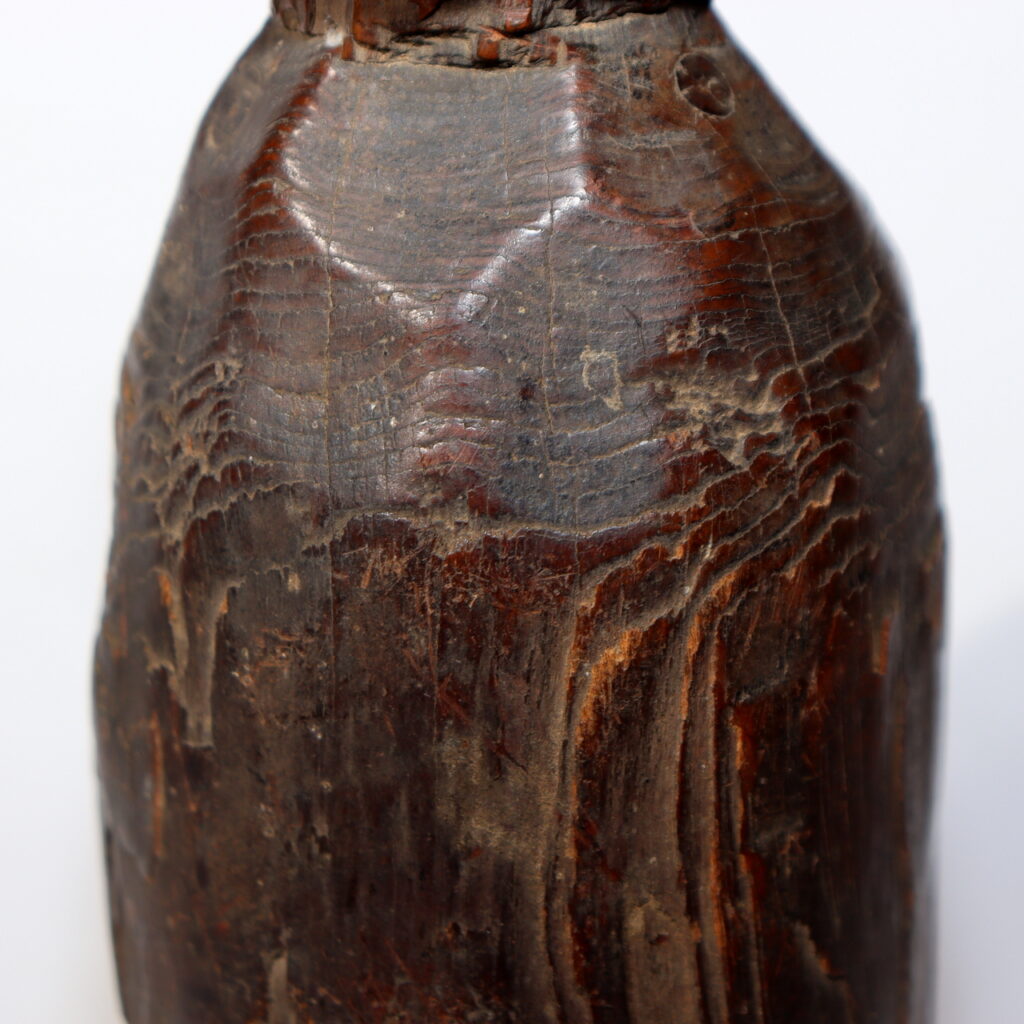
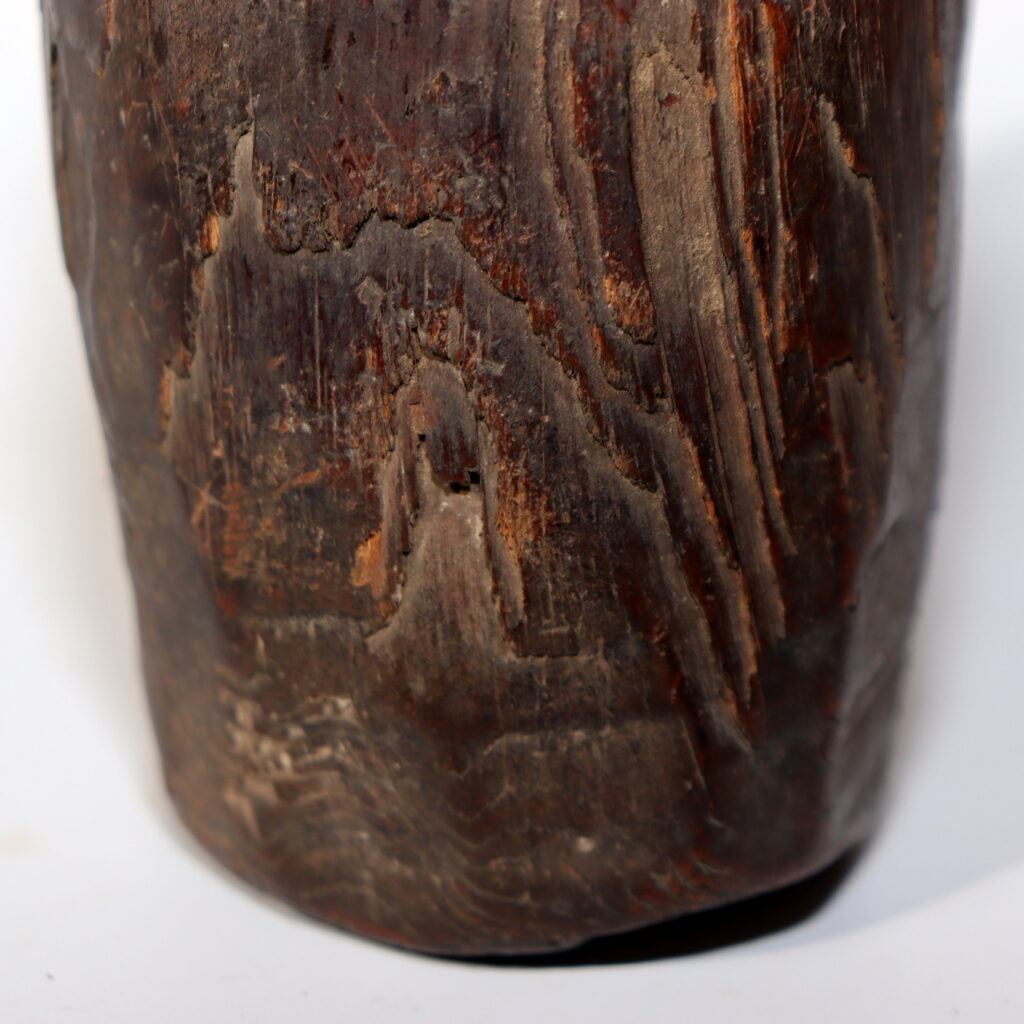
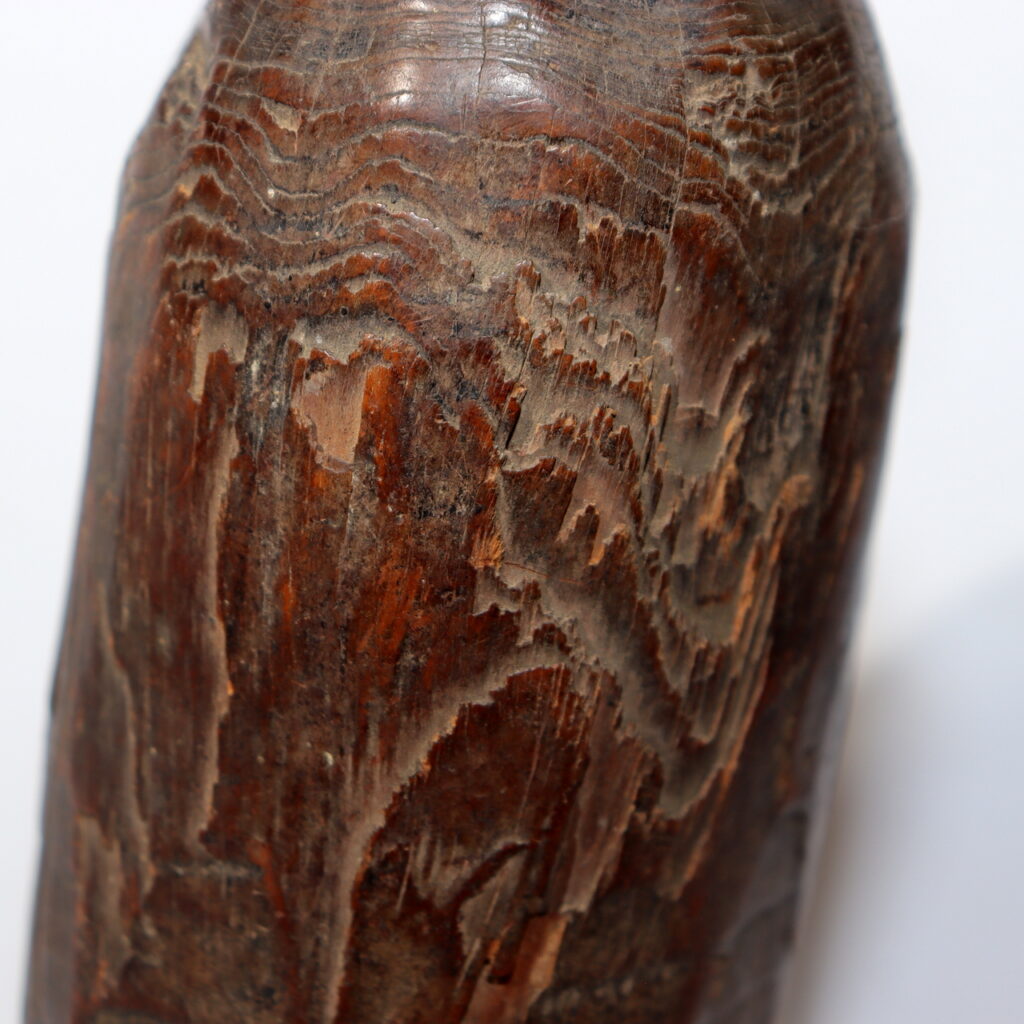
Some objects whisper their stories through timeworn textures and softened contours. This 19th-century Korean wooden loom weight, hand-carved during the Joseon Dynasty, may have begun its life as a humble weaving tool, but today it stands as a profound example of folk art—imbued with quiet spirituality, rustic elegance, and the beauty of function made form.
The Story Behind This Piece
In the traditional Korean household, weaving was not only a daily necessity but a deeply embedded part of domestic life. These loom weights—used to tension vertical threads—were essential components of upright looms found in rural homes.
This particular piece, however, transcends mere utility. Likely dating from the mid to late 19th century, it was carved from a single solid block of wood, its surface worn smooth from handling and time. In Japan, such patina and softened edges are described as “toro-toro”, evoking warmth and gentle aging.
Its rounded form and upright posture evoke guardian figures found in Japanese and Korean folk traditions, such as Dosojin or jangseung—protective spirits placed at thresholds. As such, the object now reads equally well as a spiritual ornament, minimalist sculpture, or meditation talisman.
What Makes This Object Remarkable
- Material and Surface: Made from dense, old-growth wood, the piece has aged gracefully, with softened corners and tactile grooves that speak to long use and careful preservation.
- Folk Expression: Its form is unadorned but powerful—reminding us of the dignity in primitive craft, where function and belief were often entwined.
- Cross-Cultural Aesthetic: Though Korean in origin, the object resonates with the wabi-sabi values admired in Japanese antiques: imperfection, patina, and presence. It could easily be mistaken for an early Japanese shrine carving or kamidana figure.
- Versatile Interpretation: Whether seen as a loom weight, a folk idol, or modern sculpture, it occupies the threshold between object and art.
This is a rare opportunity to own an authentic artifact that quietly embodies a working life now past, while simultaneously inviting new layers of meaning.
A Timeless Object for Discerning Collectors
For those who collect Korean folk antiques, Japanese primitive carvings, or items that blur the line between art and ritual, this piece offers rare value.
Perfect for:
- Interior designers seeking sculptural accents with story
- Collectors of Joseon-period artifacts or rural Korean tools
- Zen-style or wabi-sabi interiors, meditation spaces, or shrines
- Galleries or museums exploring textile history or spiritual folkcraft
Its unpretentious presence is one of its greatest strengths—an object that rewards quiet contemplation and tactile appreciation.
Conclusion: Humble Tool, Sacred Form
Though born from domestic necessity, this 19th-century Korean loom weight now exists as something greater—a relic of labor, art, and belief. In its softly worn lines lies the poetry of everyday life, shaped not by aesthetic theory, but by use, touch, and time.
If this item has already been sold, we invite you to explore other one-of-a-kind folk art and antique pieces in our collection:
🔗 Browse our full collection